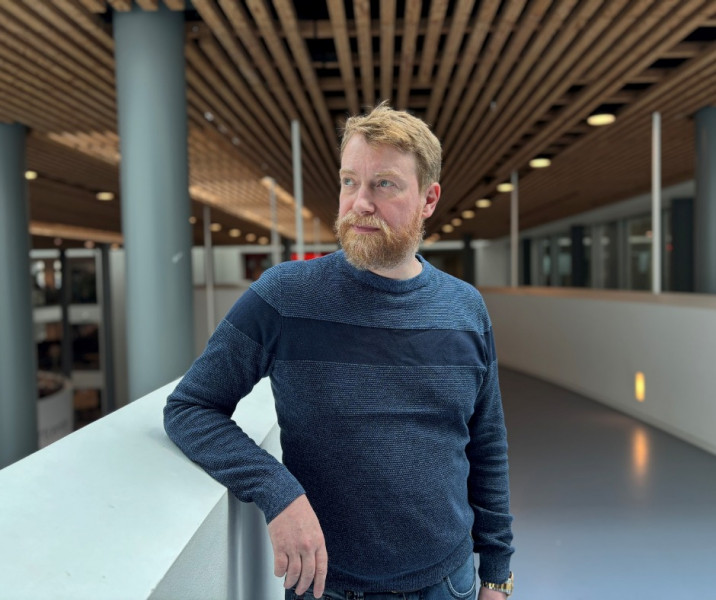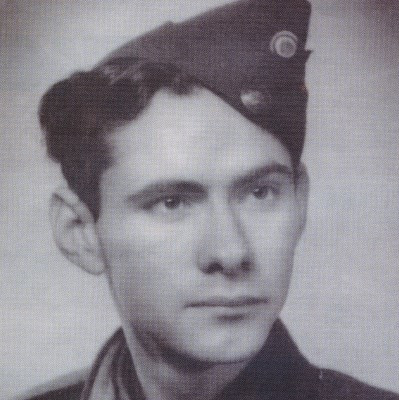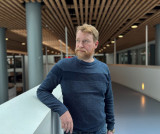The mystery Kai Mossin

The picture: Kai Mossin as journalist in the USA in 1949. On the back of this photo, which he sent to Rolf Løvaas, it said: “To Rolf from your good friend Kai. Dallas 11/20/49.”
1950 and 1965
In 1950, the first Norwegian gay organization was founded. For the first 15 years, all work was conducted discreetly and in great secrecy. But in 1965, that began to change. Norwegian queer activists went on the offensive:
- Kim Friele and Håkon Nilsen (then chair of DNF-48) were the first to come out publicly as homosexuals on a radio program, albeit under pseudonyms.
- Arne Heli came out publicly at a meeting at the Student Society in Oslo, also under a pseudonym.
- The internal members’ newsletter Oss imellom ("Between Us") became Oss ("Us") and was published publicly. The cannons were loaded—and pointed outward.
But what if the shift had happened 14 years earlier?
Scandinavian Queer History
Peder Edelberg from the University of Copenhagen is a prominent figure in Scandinavian queer historical research. He has studied the rise of queer activism in Denmark, Sweden, and Norway during the 1950s.
He recounts how Danish interference in the Norwegian association’s choice of leader shaped the direction of the Norwegian movement. (See his talk at the bottom of the page.)
A Bit More History:
In 1948, a gay organization was founded in Denmark: The Association of 1948. Two years later, branches of the Danish association were established in Oslo and Stockholm in an attempt to build a Nordic organization.
The founding of the Oslo branch is considered the beginning of queer activism in Norway: The Norwegian Association of 1948 (DNF-48). Rolf Løvaas became the first chair in Oslo, with approval from Denmark.
But after a year, he wanted to step down. Kai Mossin had emerged and wanted to take over. He had plans to reform the organization. He believed it didn’t work that the Norwegian chair and the entire board wanted to remain anonymous. “We must be open. We must step forward publicly and show who we are. That is the only way forward.” He also wanted to build connections with a broader network of queer organizations around the world, Edelberg says.
Mossin traveled to Denmark to meet with the leader of the Danish association, Axel Axgil (Axel Lundahl Madsen). Axgil was unimpressed with Mossin and sent a letter to Løvaas saying that Mossin could not become chair.
Scandinavian Dispute
Both Rolf Løvaas and Kai Mossin protested the Danes’ interference in Norway’s leadership choice.
Eventually, Axel Axgil threatened to expose that Kai Mossin had been a member of Nasjonal Samling (Quisling’s fascist party) before the war. He said he would reveal this to the entire Norwegian membership unless Mossin withdrew immediately.
Mossin then gave up and disappeared. Rolf Løvaas led the association for one more year. In 1952, he handed over the chairmanship to Dermot Mack, who also remained quite anonymous and never publicly revealed his identity.
However, it’s worth noting that Mack played a key role in blocking proposed legal changes targeting sex between men—though he did so quietly. The attempt to form a Nordic queer organization collapsed the same year, in 1952. The Norwegian and Swedish organizations continued as separate national groups.
Into the Public Eye
Fourteen years later, a new generation of activists emerged, with Kim Friele becoming a prominent public figure. In 1965, they brought the fight for rights into the public sphere. According to Peter Edelberg, had it not been for Danish interference, Norwegian queer history might have taken a completely different course starting in 1951.
Who Was Kai Mossin—and What Happened to Him?
Runar Jordåen, a historian at the Norwegian Queer Archives (Skeivt arkiv), has also tried to uncover more about Kai Mossin.
– We know he had a privileged upbringing in Frogner, Oslo. Both of his parents were editors, says Jordåen.
Kai Mossin was born in 1921 and was 19 when the war came to Norway. In 1960, he reappeared in Sunndal in Nordmøre but later moved to Sweden, where he died at just 50 years old in 1971, according to Jordåen.
– We know how he portrayed himself, and that may not be entirely accurate,” says Peder Edelberg.
Mossin had been a member of Nasjonal Samling before the war, but left the party when the Germans invaded Norway. He was a journalist, served in the U.S. Air Force, worked in the British Merchant Navy, helped Estonian refugees reach the U.S., and started a “circle of friends”—a coded term for a gay organization—in Texas, Edelberg notes.
– He did a lot. He was very active. And then suddenly, in 1951, he shows up in Oslo wanting to take over the entire gay and lesbian association. And he succeeds—he’s appointed chair—but then he leaves again. So I think he’s a really fascinating figure, and he would have taken the Norwegian organization in a very different direction than his successors did, Edelberg concludes.
Watch Edelberg talk about Mossin at the 2024 conference in Bergen:
You can also view his full presentation at the Queering Nordic Borders conference.



